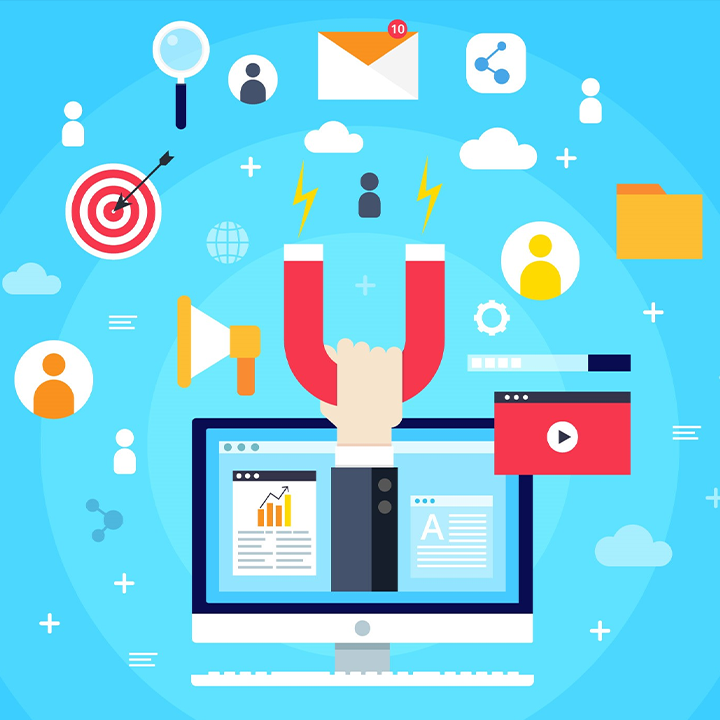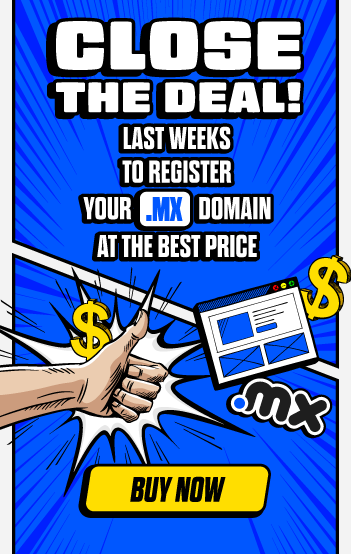If you have decided to start your venture or if you have been looking for the best strategies to sell more, surely you have already come across the term inbound, but if you do not know what it refers to do not worry because in this post you will learn the application of the Inbound methodology in Marketing.
For now we can only tell you that the difference between conventional marketing and inbound marketing is huge and the benefits much more, so read on to see if your company needs this type of methodology.
What is the inbound methodology?
Inbound is a marketing methodology whose main objective is to capture customers and make conversions by creating tailor-made experiences. Unlike other more traditional advertising campaigns such as outbound marketing, which tend to be more intrusive campaigns with very general content that the public does not always want; inbound marketing aims to create connections while solving real customer problems.
This methodology combines advertising and marketing techniques that are characterized by not being intrusive. The methodology starts from the first contact with the public and is maintained throughout the buying process until the final transition.
Inbound marketing stages
Basically, the inbound methodology is divided into four stages: attract, convert, close and delight. These stages are closely linked to the buying process, i.e. they cross transversally the buying cycle, but unlike other methodologies, one more stage is added, the loyalty stage, which is the target stage and the most important to consolidate a business according to this methodology.
Surely these stages sound very similar to other methodologies or even to a sales funnel, so below we will explain each of them in detail so you can understand why this methodology is so new and why it can grow your business like no other.
1.- Attract
At this stage the main objective is to capture the attention of people, for this you will find a thousand tutorials on the internet or you will have already implemented strategies that may or may not work for you, but the important thing when we talk about inbound marketing is that in any process the actions and advertising are not intrusive. At this stage it is important to generate valuable content that positions you as a reference in the topic of interest of your buyer.
In this first stage content is king, so at this stage a blog is a fundamental tool to position not only your page but your brand as an expert in your niche. However, having a blog is not everything, especially when you start, so it is necessary to optimize the digital infrastructure in order to achieve a significant increase in traffic to the website.
As inbound marketing aims to meet the needs of customers it is important that your content plan is especially focused on your buyer personas, not only to capture their attention, but primarily to meet their needs.
2.-Convert
In this stage the objective is to generate leads, that is, to convert this audience into contacts, which can then be followed in the next stages. For this there are different strategies and tools that you can use to generate more leads, a landing page is the most obvious option, however in inbound marketing you can get better results using tools such as leadflows, chatbots and forms, which when inserted into your website visitors will find it very easy to interact with these tools.
To make it easier for users to interact, it is recommended that you also associate them with quality, downloadable content or special promotions. This way, people can share their data voluntarily, so that you can integrate them into your contact base.
3.- Close
The objective of this stage is that all efforts should be concentrated on achieving the sale. The tips here are innumerable, and the success of them depends on the type of company you have, but always keep in mind that the main tip is to make the buying process as simple as possible for the customer. It is useless to have worked on the conversion from public to lead, if at the time of purchase the customer feels overwhelmed in a tangled buying process that may force him to give up.
Here the best tool can be to implement a CRM (Customer Relationship Management), i.e. a software that manages customer relationships, so you can monitor, and increase sales, as it facilitates business relationships for both your team and the customer.
If you have an online store, remember that in addition to making the purchase process simple, without adding too many steps, you must also ensure that the purchase and the purchase process are secure.
4.- Delight
This is the most important stage for inbound marketing, as it is about taking customers to another level, that is, turning them into loyal customers. Of course, if you are interested in implementing this methodology means that the relationship with your customers does not end with the purchase, in fact from there you have to work to maintain contact, so that loyal customers will possibly become promoters of your brand.
It is undoubtedly one of the most complicated steps, the important thing is to keep in touch with your customers, offering information and services that meet their needs. For the implementation of this phase the important thing is that your team becomes advisors and experts who can help your customers when they need it.
The tools we will use here are some that we have used in lead generation such as chatbots, chat or email, because the customer has already established contact through them and already has confidence in these channels.
Other key tools that help you in the delight phase are social networks, remember that if you use them correctly, in addition to advertising your social networks will help you create a community around your brand. For many of your customers it will be easier to communicate through your profile, leaving questions or comments about your products or services. Responding in a timely and clear way shows that there is a human behind the account, who understands you and really wants to help you.
Do not forget that in any process of the sales funnel or any contact with the public or customer the most important thing is to always maintain an attentive attitude and provide unconditional help regardless of whether you will get a conversion or not.
The inbound marketing methodology
Establishing the inbound methodology in your marketing strategy means that you will seek to attract new prospects on a large scale, then interact with them and delight them on a one-to-one basis.
It also means that your marketing department will work closely with the sales and customer service teams as one large department, to ensure that the customer and their needs remain at the center of the strategy.
What are the advantages of the inbound marketing methodology?
Although it seems to be a much more complicated job, the inbound methodology is more than digital marketing and offers more and better benefits that can follow in the long run, some of them are:
Increases qualified marketing leads: thanks to the application of this methodology you can multiply in one year by 7.3 your marketing leads and in two years by 9.8 years.
Increase registrations (leads): getting leads is one of the most complicated strategies but thanks to inbound you can multiply the generation of leads by 3.8 and up to 14.7 in two years.
Increase the number of visits to your website: even if your objective is only to attract traffic to your website, with inbound you can multiply your traffic by 4.7 in the first year and by 24.3 in two years.
As you can imagine, applying the inbound methodology in marketing is a complicated process, involving the restructuring of several areas of your company, but the results are worth it, as they can be measured in the long term. Tell us, are you willing to include the inbound methodology in your marketing strategy?

